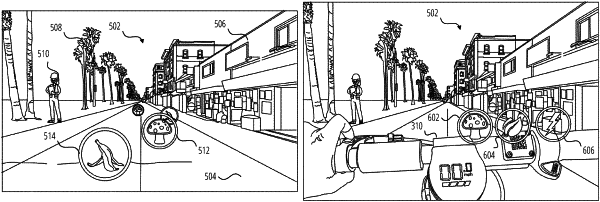| CPC A63F 13/65 (2014.09) [A63F 13/213 (2014.09); A63F 13/537 (2014.09); A63F 13/5378 (2014.09); A63F 2300/8082 (2013.01)] | 20 Claims |

|
1. A method of providing interactive personal mobility systems, performed by one or more processors, comprising:
receiving a map of a course including a plurality of virtual objects, the map corresponding to a location in the real world and defining a track along which first and second participants can ride on respective first and second personal mobility systems;
displaying a first virtual object on a wearable first augmented reality device corresponding to the first participant, the first virtual object being located in a position in a field of view of the first augmented reality device corresponding to position in the real world on the course;
displaying the first virtual object on a wearable second augmented reality device corresponding to the second participant, the first virtual object being located in a position in a field of view of the second augmented reality device corresponding to the position in the real world on the course;
detecting proximity of the first personal mobility system or of the first participant with the position of the first virtual object in the real world;
in response to the detection of proximity, transferring the first virtual object from the position in the real world to a location fixed to a steering element of the first personal mobility system on which the first participant is riding;
detecting an intersection of the first participant with the location fixed to the steering element of the first personal mobility system; and
based on detecting the intersection, modifying a performance characteristic of the first personal mobility system.
|